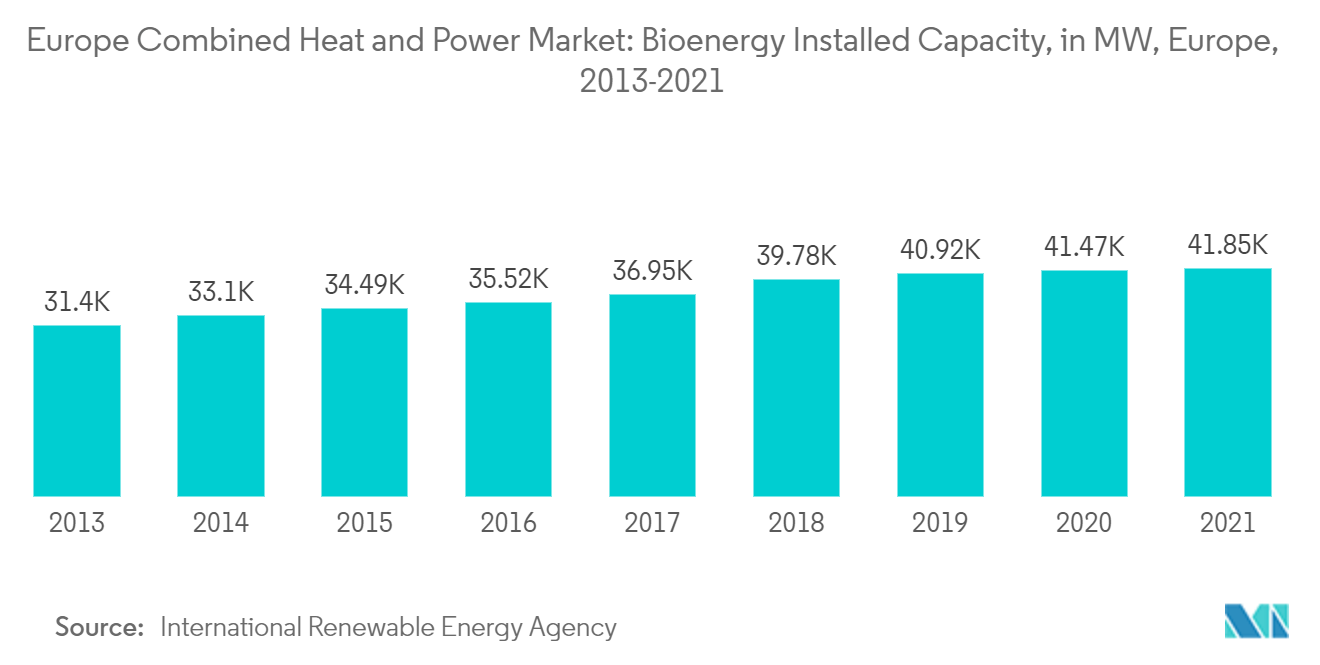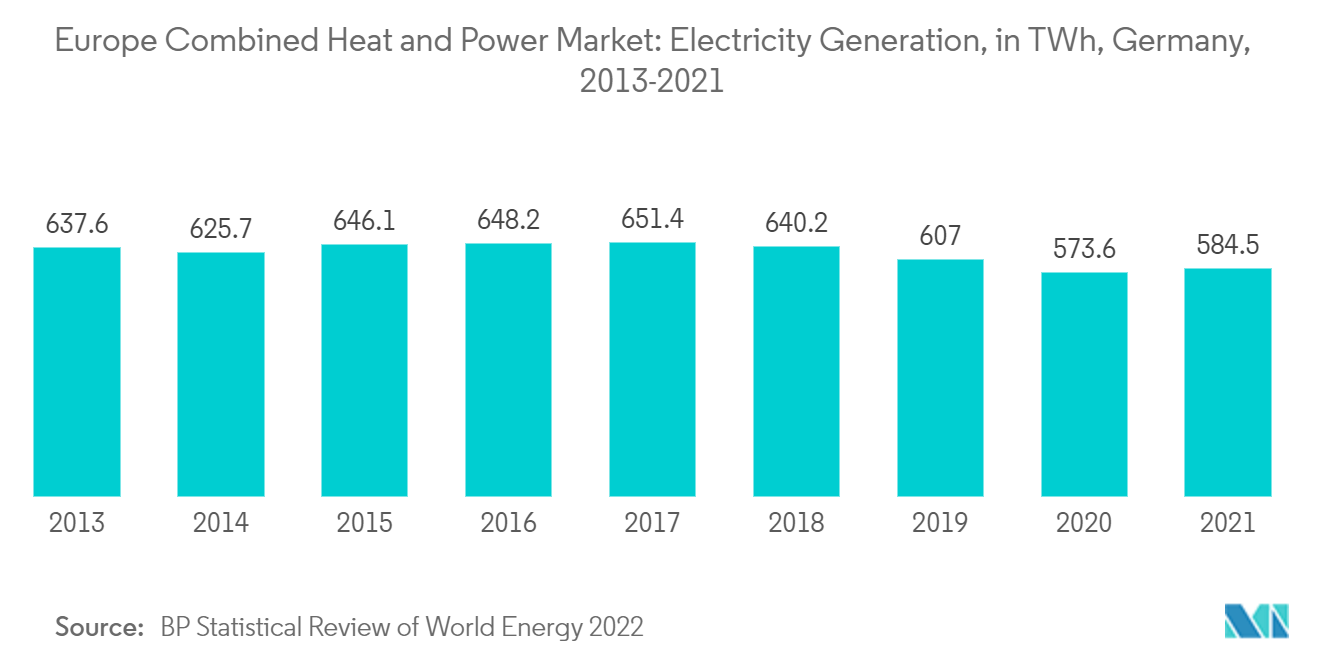Market Trends of Europe Combined Heat and Power Industry
This section covers the major market trends shaping the Europe Combined Heat & Power Market according to our research experts:
Biomass-based CHP to Witness Significant Growth in the Market
- Over the past few years, the biomass industry has grown significantly. Biomass combustion is a carbon-free process, as the resulting CO2 is previously captured by the plants being combusted. Biomass combined heat and power can be a beneficial technology for sites with a constant demand for heat and electricity.
- Europe's bioenergy production amounted to 41,846 MW in 2021. However, figures increased by 376 MW of bioenergy between 2020 and 2021, peaking at 41,846 MW of bioenergy in 2021.
- Small- and medium-sized CHP plants are usually sourced with locally available biomass. Large CHP plants and coal/biomass co-firing power plants require biomass sourced from a vast region or imported wood and forestry residues.
- Cogeneration, or combined heat and power, currently provides 11% of Europe's electricity and 15% of its heat, contributing up to 21% of the EU's CO2 reduction target and 15% of the EU's energy efficiency target.
- By 2030, cogeneration will likely provide 20% of electricity and 25% of heat in Europe, contributing up to 23% of the EU's CO2 reduction target and 18% of the EU's energy efficiency target. By 2050, the sector is likely to double the cogeneration capacity in the EU energy mix by ensuring that cogeneration is prioritized for all thermally generated electricity and heat, thus avoiding wasting valuable energy.
- The contribution of CHP to the energy mix varies significantly among European countries, from less than 5% in Malta, Cyprus, and Greece, to more than 30% in Denmark, Finland, Latvia, Lithuania, and Slovakia. Overall, at the European level, cogeneration has remained stable during the past few years.
- Europe's CHP industry is in industrial applications, providing power and steam to sectors such as pulp and paper, aluminum, chemicals, ceramics, glass, textiles, food and drink, and steel manufacturers.

Germany to Dominate the Market
- Germany, Europe's largest economy, has set a clear ambition for CHP with a dedicated law and a target of 120 TWh by 2025. The country has experienced real CHP growth. It derives 16% of its electricity from cogeneration, well above the European average of 11%.
- Germany generated 584.5 terawatt hours of electricity in 2021, an increase of nearly 2% from the previous year. Nevertheless, in 2017, these figures decreased by 1.9 terawatt hours and peaked at over 651 terawatt hours.
- Several high-profile CHP projects have come up throughout Europe, are under construction, or have been approved. One of the largest projects is the municipal cogeneration project underway in the port city of Kiel, about 90 km north of Hamburg, Germany.
- Germany upgraded its support scheme, introducing guaranteed premiums that spurred investments in large district heating networks. Key industries in refining and chemicals followed smaller retail businesses with suitable heat loads.
- Micro-CHP units for individual homes have also entered the German and European markets in the past few years. Hence, a growing initiative to promote CHP in the country is expected to drive the demand for the overall CHP market over the forecast period.


